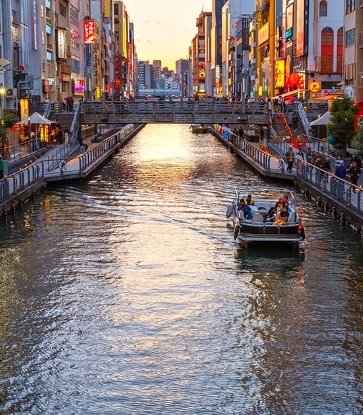People have been eating fugu for a long time.
We know that people have been eating fugu for thousands of years. Fugu bones have been unearthed in shell mounds from Japan’s Jomon period (approximately 14,000 to 1000 BC ). During the Azuchi-Momoyama period (1568–1600) , however, the de-facto ruler of Japan, Toyotomi Hideyoshi (1537–1598 ), banned the consumption of fugu because so many people kept getting poisoned by it. Despite this edict, fugu remained stubbornly popular with everyone from the common folk to intellectuals, even appearing in haiku and ukiyo-e prints. The desire to enjoy the delicious flavour of fugu despite the dangers gave rise to a saying about perilous predilections: ‘I want to eat fugu, but I value my life’. The prohibition on eating fugu was lifted during the Meiji period (1868–1912 ), when the prime minister at that time, Ito Hirobumi, ate fugu in Shimonoseki and became so enamoured with it that he began discussions with the governor of Yamaguchi Prefecture to lift the restriction . The practice of eating fugu soon spread nationwide.

The season for fugu cuisine
The season for torafugu (Japanese pufferfish or tiger pufferfish) is said to be from the autumn equinox to the spring equinox. A proverb advises to start eating torafugu when the bitter orange gains colour and to stop when the rapeseed flower blooms. Fugu is a star on menus not only at speciality shops but also at restaurants ranging from kappo (counter-style restaurants serving traditional Japanese cuisine) to ryotei (traditional Japanese restaurants). The secret to the delicious taste of fugu is that it is less fatty than other white-fleshed fish, with higher concentrations of the umami components glutamic acid and inosinic acid. Letting them sit overnight enhances the fish’s umami as well as the pleasing suppleness characteristic of fugu. Exceptionally versatile, fugu can be served as jellied broth (nikogori) or sashimi, or it can be grilled, simmered or fried.
Fugusashi
Usuzukuri (thinly-sliced sashimi) is where the skill of the fugusashi (fugu sashimi) artisan truly shines. Cut with a dedicated knife, the raw fugu is sliced so thinly that the pattern on the plate can be seen through it. It may be artfully modelled on a chrysanthemum or a peony or arranged auspiciously like a crane as a wish for long life. Bitter orange or sudachi citrus fruit play valued supporting roles with their seasonal fragrance.

Fugunabe
Fugu hot pot is a dish to warm the body in winter. The filleted flesh is simmered along with the remains of the carcass and seasonal vegetables. The umami of the fugu soaks deep into the soup stock, making the final zosui (rice gruel) of the collagen-rich broth something to look forward to. In the Kansai region, fugunabe is called tetchiri. Another name for fugu is teppo, literally ‘rifle’ while fugunabe is also known as chirinabe for the way the flesh shrivels (chiri-chiri) when placed in the hot pot.

Milt
Fugu milt is one of the true blessings of winter. It is most bountiful in January and February, just before spawning. It tastes wonderful whether grilled, fried or in zosui. For chefs, the arrival of fugu milt is a chance to display their talents. Once eaten, its velvety texture is never forgotten.

Ponzu
Nothing begins in the world of fugu cuisine without ponzu , a sauce of dashi stock, soy sauce and a seasonal vinegar of citrus such as bitter orange or sudachi. Ponzu is such a true encounter with the season that fugu restaurants labour endlessly to perfect it.

Here are some speciality restaurants in the MICHELIN Guide where you can enjoy fugu to your heart’s content.


Yoshiko
One MICHELIN Star/ Osaka

Kitaoji Rosanjin (1883–1959 ), an epicure famed among epicures, once declared, ‘Nothing compares to the delicious taste of fugu’. The flip side to fugu’s alluring flavour was the danger of being poisoned, ‘struck by a bullet’, as it were, which is why fugu used to also be called teppo, ‘rifle’. In western Japan, where fugu culinary culture particularly flourishes, the fish is considered auspicious, for which reason it is also called fuku , ‘good luck’. As a fish that brings good luck, fugu is a fitting dish for celebratory banquets.
Top Illustration: Ⓒshutterstock

















